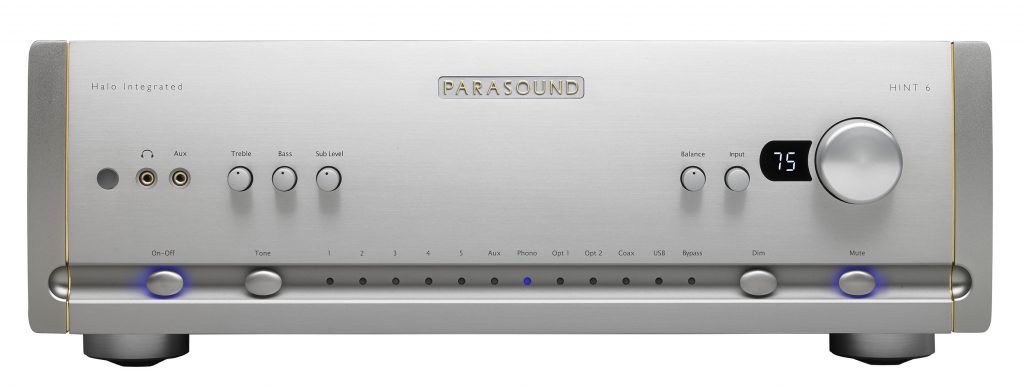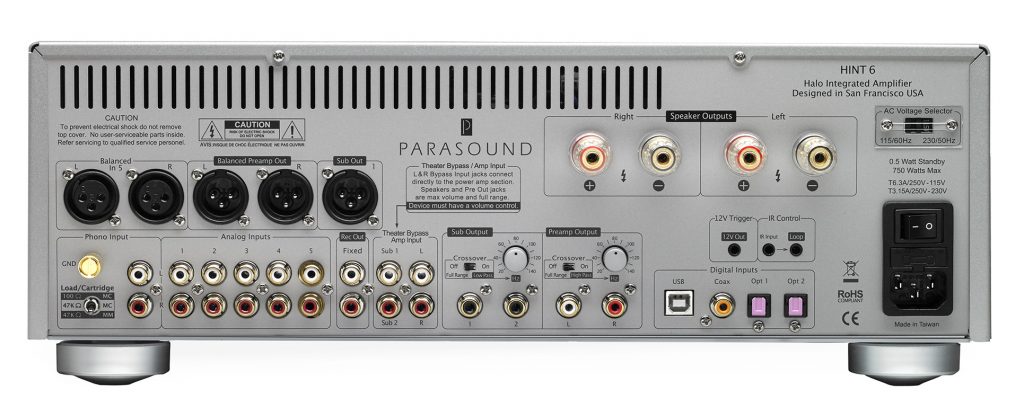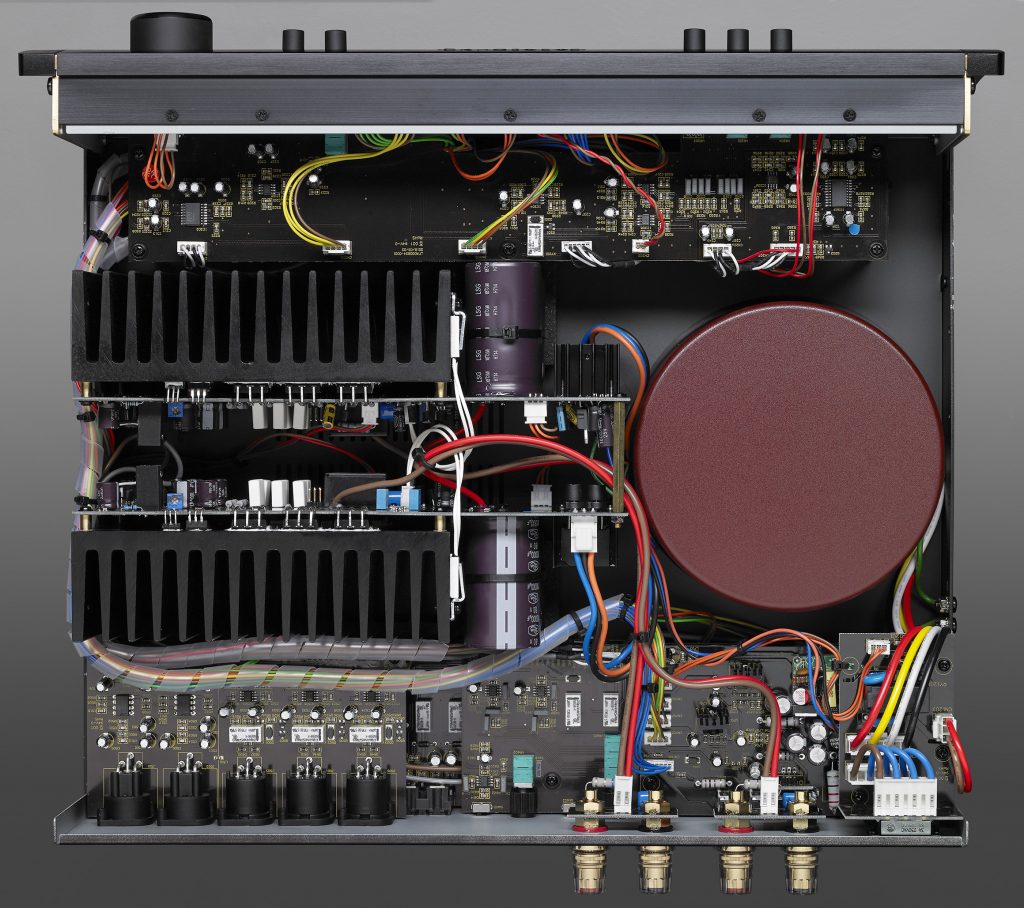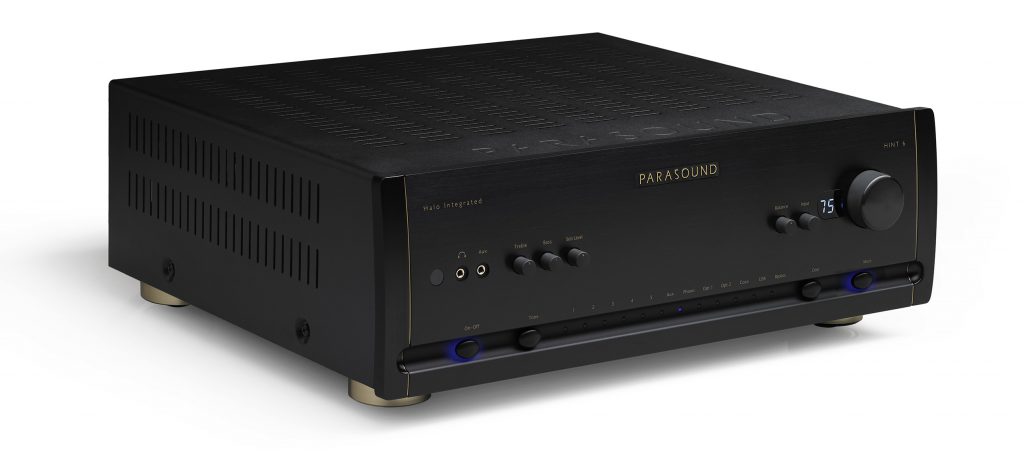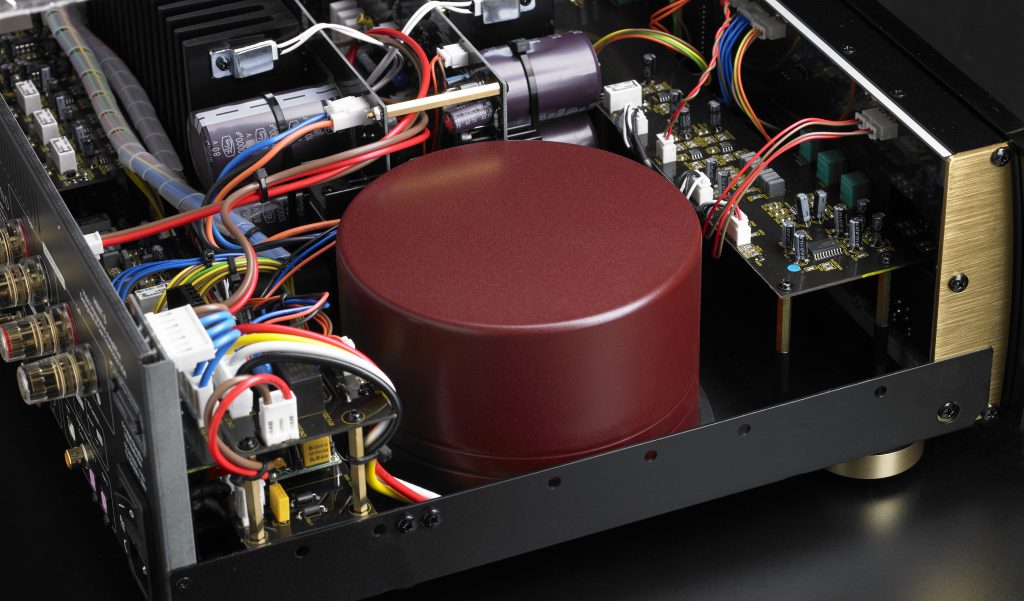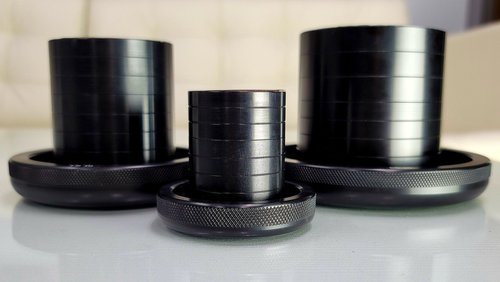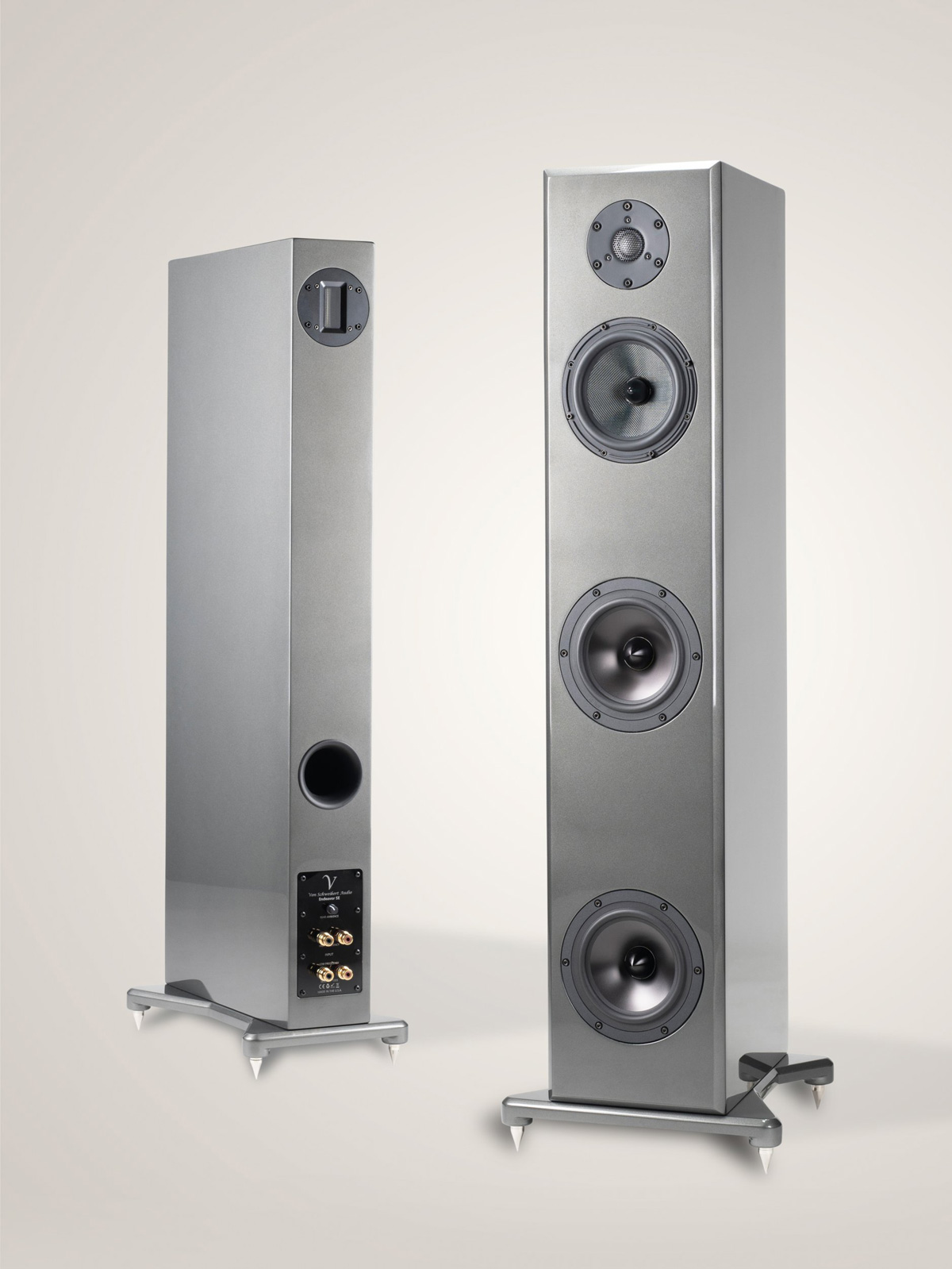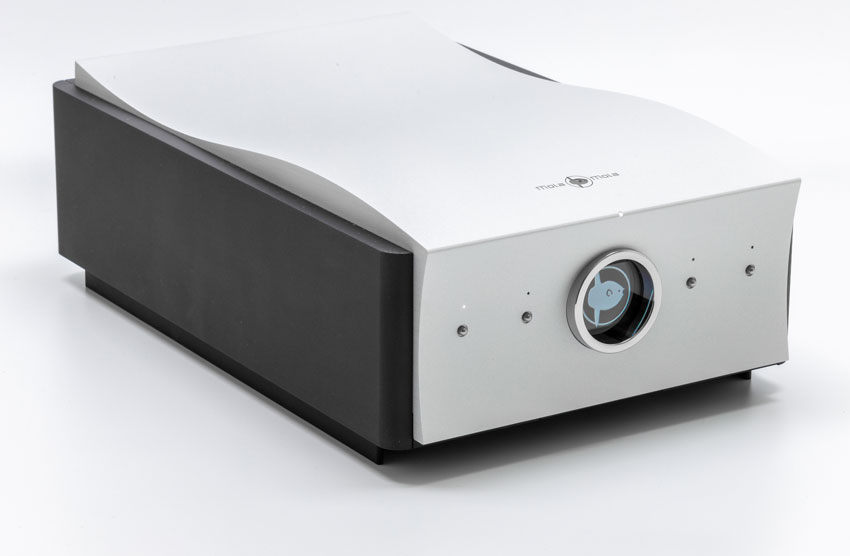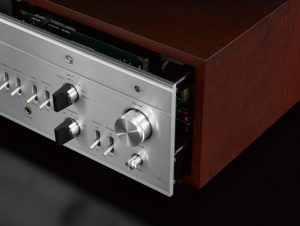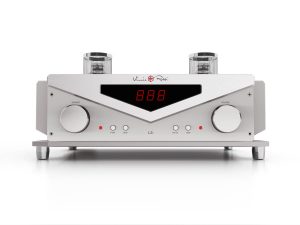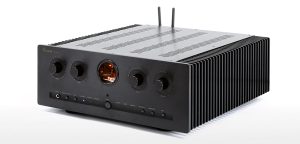Don't Mess with Success
Armed with a seemingly boundless reservoir of engineering creativity, a healthy dose of professional humility, and keen market instincts, the stealth-like stalwarts at San Francisco-based Parasound continue to re-calibrate accepted price-vs-performance expectations in the high end. The firm has survived (and thrived) not by touting revolutionary design advances to its broad lineup of amps and preamps (few of which ever pan out in the high-end, by the way), but by conservatively delivering incremental improvements to established product platforms, and then, only when said improvements provide genuinely better sound and/or ergonomic performance.
Backed by the redoubtable circuit design talents of the legendary John Curl, and the considerable business talents of firm founder and head-honcho Richard Schram, Parasound enjoys the enviable reputation of offering top-performing designs at prices that university professors, mid-level execs, and new-to-the scene professionals can afford to own.
The firm's well regarded Halo line embodies this "offer them more than they expect" mantra, its distinct champagne-hued boxes (also available in an enticing black finish) enjoying something approaching iconic status in the ever-shifting high-end electronics landscape. The HINT 6 Halo integrated amplifier, a new entrant into the Halo family, and the subject of this review, typifies just what Parasound is all about. Fairly priced, but not cheap; smartly styled and robustly built, but eschewing, refreshingly so in my estimation, the two-inch thick face-plate / 100-pound chassis "component-as-jewelry" aesthetic embraced by far too many firms, the HINT 6 wears its proletarian garb handsomely and intelligently.
The 6 builds upon the market success of the earlier HINT integrated amplifier that Parasound introduced in 2014. The "6" designation denotes the migration of circuit design advances and feature upgrades derived from the new Halo P 6 preamplifier. These include a fine onboard ESS Sabre32 Reference DAC (accessed via USB, coaxial, or two optical inputs), an updated USB input with universal plug and play (UPnP) flexibility for Windows 10 and MAC computer-based systems, and additional gain for lower output moving coil cartridges. The improved volume control is a discrete resistor ladder controlled electronically. The volume control knob rotates smoothly on ball bearings, making it a pleasure to use.
Flexible connectivity options (including RCA and balanced inputs and single-ended and balanced outputs) allow users to integrate (pun intended) the HINT 6 into virtually any audio system. A flexible high pass crossover option allows users to configure the HINT 6 as a dedicated preamp should they purchase a beefier power amp in the future. An equally flexible low pass crossover option permits the selection of optimal crossover frequencies (from 20 to 140Hz) better to integrate quality subwoofers into one's system.
All in all, I found the rear panel layout to be just about ideal if a wee bit tight, to be expected given the high level of connectivity that the 6 boasts.
The John Curl-designed power amp section delivers 160 watts x 2 into 8 Ohms and 240 watts x 2 into 4 Ohm loads. Underscored by a beefy encapsulated toroid transformer, 40,000uF in power supply filter capacitance, and featuring "matched JFET input stages and MOSFET driver stages," the amplifier comfortably drove every speaker in my stable of reference models (the Focal Sopra No. 1, the Von Schweikert Unifield 2 Mk. III, Studio Electric M4 monitor, and Magnepan 1.7i panels) with grace and ease. High quality 24k gold-plated 5-way speaker binding posts round out the package (along with a very useful remote and well-written instruction manual that I forgot to repack when I shipped the amp back to San Francisco).
Smooth Sailing
Straight out of the box, the little Parasound reassured with its unapologetic embrace of traditional company sonic values. These included superb quietude, fine transparency, and engaging overall musicality. To its credit, the HINT 6 went about its business without ever over- or de-emphasizing any portion of the audio spectrum. It consistently reproduced all manner of music with remarkable confidence, grace, and balance. This made the 6 refreshingly easy to listen to and through, although speaker choice did play an important part in securing the proper sonic mix (about which, more later).
The 6's unforced naturalism highlighted the ability of both old and new school high-resolution formats to captivate and move. Good ol' vinyl's core musical strengths, namely transient speed and precision, micro-dynamic fluidity, imaging prowess, and forward musical momentum, were on full display here. Paired with the lively JE Audio HP20 phono preamp I reviewed a while back (HERE), the HINT 6 reproduced tonal shadings and instrumental timbres with impressive color, texture, and resolution. On something like Chad Kassem's stellar reissue of the Sibelius: Symphony No. 5 and Karelia Suite (RCA/Decca-Analogue Productions), the 6 delivered largely intact all the air, openness, speed, and transparency the HP20 could muster, sacrificing only a touch of ultimate slam and crunch down low.
The HINT 6 also proved highly transparent to analogue source components, rendering in stark relief, for example, the Pear Audio Kid Howard table / Cornet 2 tonearm / Ortofon Cadenza Black MC combo's richly drawn portrayal of instrumental colors, delicate, silky, decays, and remarkable timbral sweetness (review forthcoming). By the same token, the amp deciphered with remarkable ease the greater speed and athleticism of the Origin Live turntable and arm / Dynavector 20X MC combo I've been living with (the cartridge recently upgraded in the Dynavector line to the new 20X2), all without bleaching or whitewashing tonal colors and instrumental textures (table / arm review also forthcoming).
The onboard phono stage delivered overall fine results as well, and represents a worthy starting point for listeners with appropriately configured systems. High levels of musical engagement, good detail retrieval, and very good transparency stood out to my ear. I can well imagine someone using a table like the very fine Rega P6 that our own Wayne Goins has raved about (in conjunction with the Rega Exacta 2 MM cartridge, HERE) getting excellent results with the onboard unit. Having said that, I would not expect someone using the Origin Live Resolution Mk. IV turntable / Conqueror Mk. III tonearm or Pear Audio Kid Howard table / Cornet 2 tonearm / Ortofon Cadenza Black MC combos mentioned above to stick with the onboard unit.
But here's the rub: the HINT 6's line stage was good enough overall to allow careful listeners to hear unambiguously the sonic improvements that better phono setups can deliver. Whether we're talking the high-value JE Audio HP20, the vibrantly upbeat Sutherland 20/20, or the brawnier, meatier-sounding Parasound JC 3+, the HINT explicitly unearthed the unique sonic footprint of each outboard unit I had on hand.
The HINT 6 also leveraged the musical strengths of the various high-definition digital formats I frequently use to stirring effect. SACDs played back via my tried and true Marantz SA-15S2 Limited Edition SACD / CD Player never sounded less than captivating, with personal favorites, including new releases and digitally remastered analogue warhorses, all faring well. DSD music files rendered via my reference Lumin D1 server highlighted the HINT 6's musical strengths particularly well. Master tape-to-DSD transfers like Falla's Three Cornered Hat (London/DSD) sounded reassuringly bloomy, warm, and three-dimensional, what one would expect playing an original London LP release of the same work on a very fine analogue rig, but with the added benefit of digital's freedom from annoying pops, ticks, and associated noise artifacts.
The onboard DAC also delivered the sonic goods, providing smooth, fatigue-free playback across multiple digital formats. Driven via the digital audio feed from my cable TV box (connected using an inexpensive optical cable from Amazon), the Sabre DAC delivered heightened 3D palpability, focus, resolution, and slam to voices and movie soundtracks. By way of comparison, the cheap DAC contained in the cable box sounded flat, lifeless, tonally bleached, and dynamically compressed—just what you'd expect. Shifting sources to my Emotiva ERC-3 CD player / transport (which I use primarily as a CD transport) and utilizing that unit's coaxial digital output slot (same cheap cable as before), I was hard-pressed to detect any notable sonic differences between the player run as a CD spinner and the latter feeding the Parasound DAC.
Bravo to Parasound for not bowing to commercial pressure and plopping just any run-of-the mill digital-to-analogue converter into the HINT 6 merely to generate sales. The onboard ESS Sabre32 Reference DAC is the real deal!
Matches Made in Heaven
Having sung the praises of the HINT 6, and rightly so, I do need to offer a few impressions about speaker matching, something we audio scribes routinely neglect to discuss in our reviews. As I indicated above, I was fortunate to have on hand several outstanding speakers of various configurations to use with the Parasound. Although I no longer have the stellar Studio Electric M4 monitors in-house, the HINT 6/M4 pairing proved an affordable delight. The 6 really sang in this setting, its speed, transparency, and coherence meshing convincingly well with the sealed-box M4. To my never-ending joy, the HINT/M4 partnership really excelled with analogue sources, delivering a delightfully composed, pacey, and engaging sound that never failed to impress.
By way of subtle contrast, although the 6 sounded very good driving my reference Focal Sopra No. 1 compacts, the pairing was not what I would call entirely felicitous. This owes largely to the fact that the HINT 6 tended to exacerbate mildly the No. 1's subtle tendency toward what some have described as the speaker's "whitish" tint, namely a slight tendency toward brightness and leanness. Please understand: I am not for a minute suggesting that the HINT 6 sounds bright or forward (it didn't, and doesn't), but it did sound mildly "solid-state" when compared to the more refulgent, tonally saturated Mastersound all-tube BoX integrated amplifier that I had on hand during the bulk of my time with the 6 (review forthcoming), especially driving the Sopra No. 1.
After testing the HINT 6 with the $9K Focal speakers and the delightful M4s, I took a leap of faith and hooked the 6 up to my beloved Maggie 1.7i panels. This pairing proved downright revelatory. While I loved the focus, precision, and convincing scaling of the HINT 6 / M4 coupling, the HINT 6 / Maggie 1.7i pairing opened the soundstage even more, offering greater scale, impact, and overall drama. Soundstage layering, holography, and height cues all improved an order of magnitude.
The HINT6/1.7i pairing also projected more involving musical detail into the listening room, resulting in a more relaxed, engaging, and moving experience. If I had to guess, I suspect that part of the magic here owes to the HINT 6's ability to give the little Maggies just what they crave: oodles of clean current. The amp and speaker also communicate in consonance with one another, meaning that they share an overall tendency to neither spotlight nor downplay any part of the audio spectrum (the speaker's obvious low bass limitations being the exception here). Their crosstalk consonance gifts to the listener remarkably balanced sound, along with impressive scaling and very good overall transparency.
Parting Thoughts
As should be apparent, I really enjoyed my time with the HINT 6. It was as easy to set up as a DVD / Blu Ray player, sounded fantastic straight out of the box (but even better after a week of burn-in), and offered enough connectivity options to please just about anyone looking for a single-box solution to their audio woes. It had more than enough juice to drive every speaker I had in the house to musically satisfying levels and it looks nice to boot!
It mated beautifully with some toney (and pricey) analogue gear and did not come across as the weak link in the mix. As points of comparison, the analogue combos mentioned above, cartridges included, fell squarely into the $7-$10K price range. This is two-to-three times the price of the HINT 6, and likely quite a bit more than someone shopping for a $3K integrated would spend for his or her analogue or digital sources. But, but… you don't have to spend big bucks on source components to get great sound with the HINT 6. For example, with decent cables and an affordable digital source, one could assemble a great system for around $7500 ($3k for the amp, $2500 for the speakers, around $1K for cables and speaker stands, and another $1K for a sensibly priced digital transport). Remember, I got great sound using a "lowly" $500 Red Book CD player to drive the HINT 6's internal DAC.
If you are short on space (and cash), I would highly recommend pairing the 6 with a speaker like the Studio Electric M4. You simply cannot go wrong with this pairing, and you don't need pricey wires and sources to get good sound. On the other hand, for about the same cash outlay, if you have the space, I urge you to listen to the HINT 6 with the Maggie 1.7i speakers. Together, these sensibly priced components surpassed by a considerable margin the sum of their not insignificant parts.
Simply put, the HINT 6 teased out added levels of micro-dynamic traction, instrumental texture, and top-to-bottom dynamic punch that took the Maggies to a different level altogether. Of course, the same thing happened when I paired the Maggies with the stunning Audionet WATT integrated amp last year, but that unit, as tested, ran about $20K and did not have an internal DAC.
You do the math!
Parasound HINT 6 Integrated Amplifier
Retail: $2995
Parasound Products, Inc.
2250 McKinnon Avenue
San Francisco, CA 94124
415.397.7100
All images courtesy of Parasound




